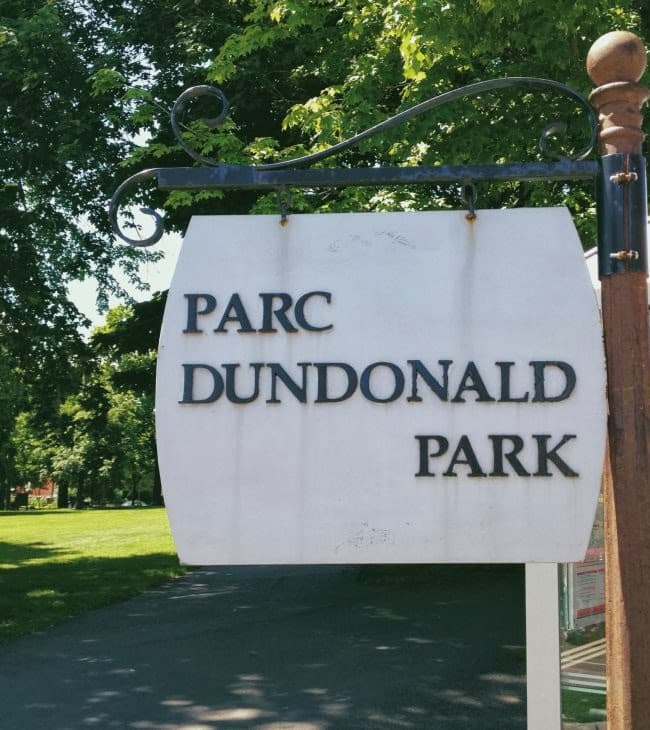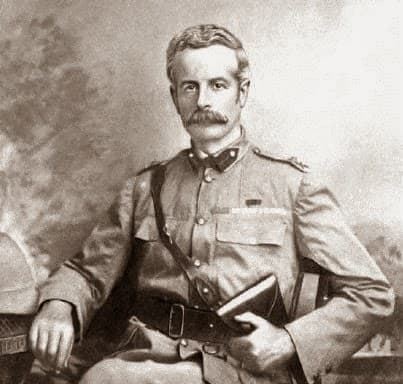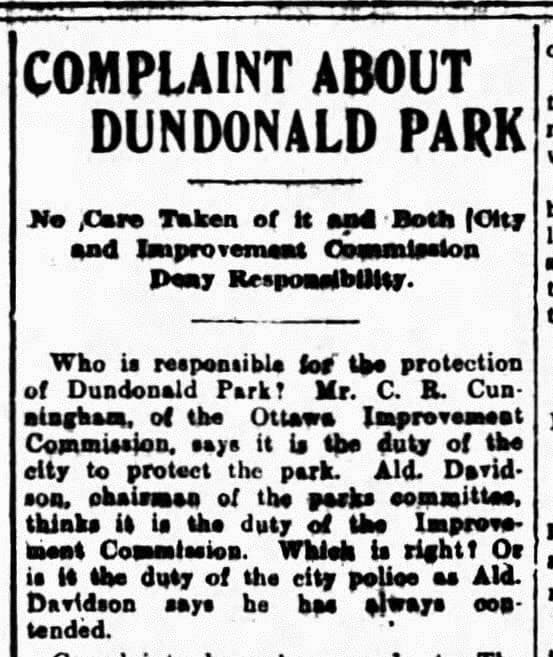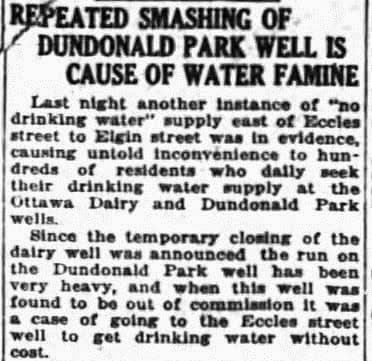8 November 2013 / #downtown #parks Christopher Ryan: Dundonald: A park by any other name (Part 1)_ A weekly feature from Christopher Ryan , a local photographer, blogger and researcher. It appears every Friday on our blog. _[  ](http://ottawastart.com/wp-content/uploads/2013/11/01-Dundonald-Sign-2013-.jpg) Somerset entrance to Dundonald Park (June 2013)Although Centretown cannot be characterized as a neighbourhood that is stuffed with green space, it is blessed with two well-used historic parks (among a number of others), roughly equidistant from either side of Bank Street. The first, Minto Park, is located at Elgin and Gilmour and is the older of the two. The second, Dundonald Park, is located at Somerset and Lyon.Dundonald Park received its current name in 1904. Although it had been used as an informal park previously (a tent city has been temporarily set up there in the wake of the 1900 Hull-Ottawa Fire - it was, in actuality a “waterworks lot”), it hadn’t yet been surveyed and was simply known as “Somerset Square” to most.[  ](http://ottawastart.com/wp-content/uploads/2013/11/02-2528Douglas-Cochrane-2529.jpg) Douglas Cochrane, 12th Earl of DundonaldOn July 18, 1904, Alderman Davidson recommended that it be named Dundonald Park after Douglas Cochrane, the 12th Earl of Dundonald. This recommendation, though it passed the parks committee, was not without some debate. Alderman Journeaux, for one, didn’t feel that Dundonald had contributed much to Canada. Davidson shot back that “he [was] one of the greatest generals the British Empire has produced.” Given that Dundonald earned the nickname “Dundoodle” from the troops under his charge for his leadership performanceduring the Boer War, it appears that Journeaux’ reluctance was likely warranted.Nevertheless, the name Dundonald was adopted and the federal Ottawa Improvement Commission (OIC – an initiative of the Laurier Government and forerunner to the National Capital Commission), which had leased the land from the city the month previous, appeared ready to commence with the construction and “beautification” of the park, as outlined in the Todd report of 1903. It would not be, however, until 1906 that Dundonald would receive attention as construction delays at the Strathcona Park project and local youth vandalism had stalled construction.[  ](http://ottawastart.com/wp-content/uploads/2013/11/03-2528Responsibility-1907-2529.jpg) Ottawa Journal, November 30, 1907.The park had been completed by the summer of 1907 and was consistently named as one of the city’s attractions. Administrative trouble, however, quickly reared its head when the City and the OIC could not agree upon which body was responsible for maintaining the park. As a popular destination, the grass was quickly trampled and trash quickly piled up. Local residents complained, but neither party was interested in taking responsibility. As it would turn out, under the terms of the lease, it was actually Ottawa that was responsible for the maintenance and security of the park and the matter was also resolved.In spite of these early difficulties, the neighbourhood surrounding Dundonald Park quickly came to be considered among the most desirable areas of Ottawa in which to live. The park’s original purpose was not entirely forgotten either. In 1913, the city began a drilling project to construct civic drinking water wells for the benefit of local ratepayers. After all, indoor plumbing had not yet been widely installed through the entire city. Drilling was initially promising, easily passing the city’s bacteriological tests. However, at the initial depths reached, the well ran dry in a matter of minutes. Through the summer of 1913, engineers continued to drill deeper into the ground until, reaching a depth of over 1375 feet (and a cost of $4,000 or about $82,000 today) in November, an adequate water supply was found.[  ](http://ottawastart.com/wp-content/uploads/2013/11/04-2528Smashed-Well-1915-2529.jpg) Ottawa Journal, November 17, 1915.In a growing and thirsty Ottawa, however, the water supplies at other local wells quickly ran low. As the city closed a number of wells (sometimes temporarily), locals took out their frustrations on them. In November 1915, the city had to close the Dundonald well for repairs when it was found that someone had broken the well’s casting with an axe or hammer.Vandalism, as it would turn out, was the most consistent problem faced by the park. I will discuss this and other issues further in Part 2, next Friday.__ __ _ – Photos & text by Christopher Ryan _**** ** See also: ** Ottawa Neighbourhoods GuideIf you liked this post, you should ** subscribe to etcetera , ** our free email newsletter. Featuring cool Ottawa events, interesting local news and contests and giveaways. Thanks!